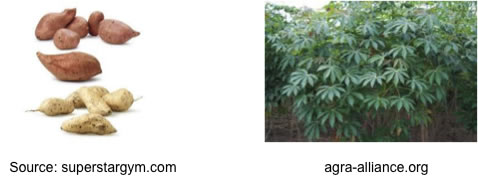

Vegetatively propagated crops
A number of species have to be vegetatively propagated because they are sterile (example: banana). But many more are propagated this way for convenience (examples: sugar cane, sweet potato, cassava).

Vegetative propagation means that once a superior individual has been identified, it can be reproduced over and over. Planting material can be root-derived (eg potato) or stem-derived (eg sugarcane). Some very high value plants are also multiplied in vitro from stem meristem cells (eg orchids). A potential problem is that mutations can accumulate over time, resulting in the erosion of the superior genotype; also the planting material can become weakened by virus infection.
Because seed is not the product, fertility is not an issue. This allows more opportunities to exploit heterosis and wide crosses.

